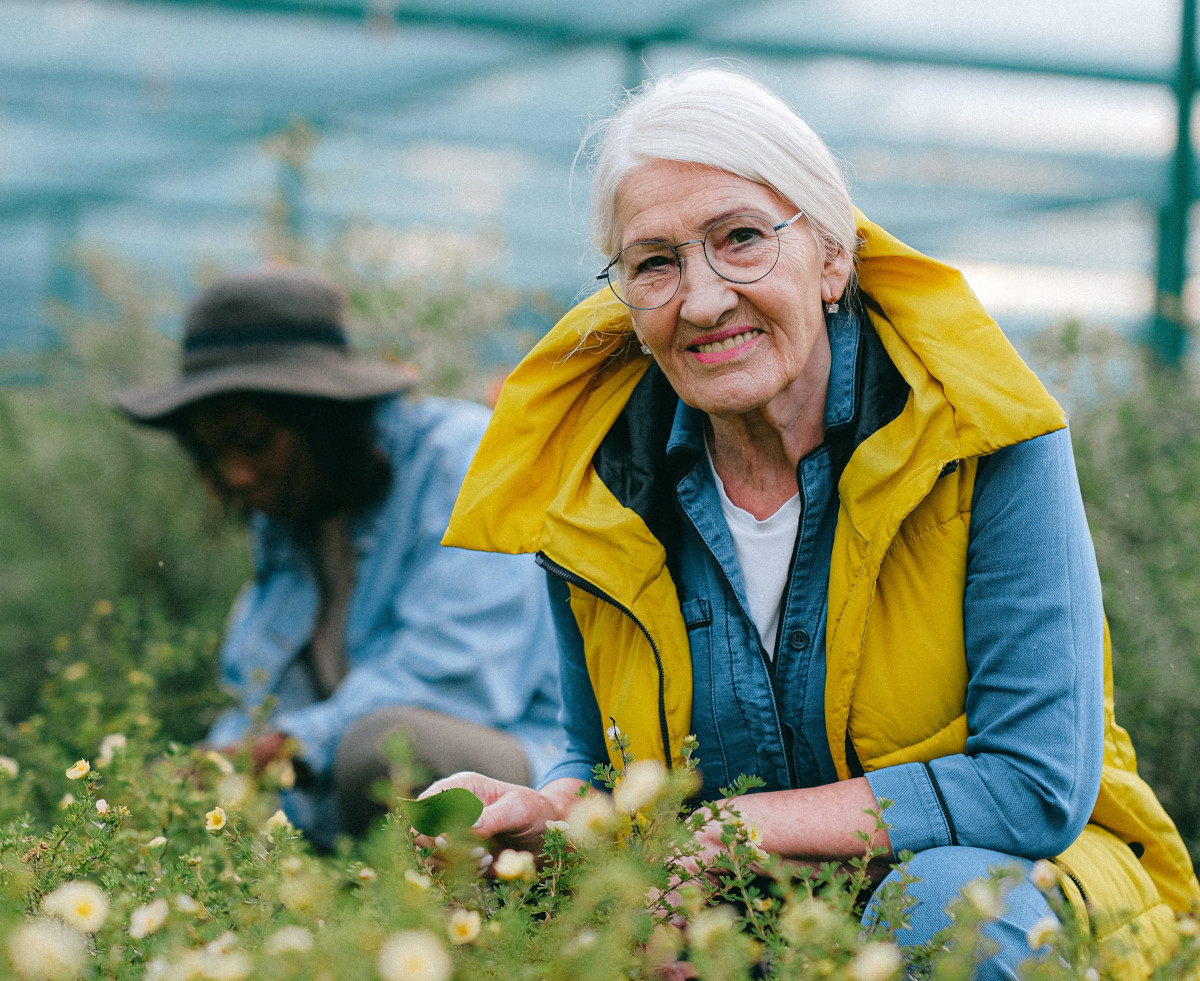Home Care Assistance is Changing the Way the World Ages. This is the latest installment of our “How To” series, where we lay out smart and easy-to-understand advice on navigating the aging process.
Angela laughs as she remembers how her daughter jokingly threatened to feed her beloved houseplants juice instead of water because Angela doted on them so much.
“Obviously, I love my children more than I do my plants,” Angela says, “but my plants are a close second, so I give them a lot of love and attention. In return, they give me joy. The first thing I do when I get out of bed in the morning is to check on my beauties.”
She admits that she’s come to appreciate her plants even more during the pandemic. It helps with the isolation, she says. “Taking care of them makes me feel productive and gives me a sense of accomplishment when I see them thriving.”
Pandemic gardening is real. As the pandemic took hold in 2020, a little more than half of Canadians (51%) decided they wanted to try growing at least one fruit or vegetable at home, according to a recent report by Dalhousie University’s Agri-Food Analytics Lab. And, this is not just for people who live in single-family homes with backyards. Just over 18.6% of these Canadians grow at least some food on balconies. The trend is taking root deeply in Quebec, where about 31.3% of Quebecers are growing food on their balconies.
The pull toward pandemic gardening doesn’t come as a surprise to researchers. Researchers at Texas A&M recently analyzed a wealth of data that was released by the Society of American Florists. The report concludes that spending time in cultivated gardens and outdoor settings can improve mood, reduce stress, improve cognition, encourage physical activity and generally boost overall well-being for both seniors and young people.
According to the Texas A&M report, “people who surround themselves with plant life and other forms of natural beauty, indoors and out, experience emotional and mental health benefits that have a positive impact on their social, psychological, physical, cognitive, environmental, and spiritual well-being.”
Angela tells anyone who will listen that her plants thrive, because she tends to their needs with care and patience. She’s even been known to talk to them as she waters and prunes them. And what she gets in return, she says, are beautiful, healthy, bountiful flowers and plants that impress her friends and neighbours. She’s been known to grow peppers, miniature lemon trees—even a pineapple tree in her relatively small apartment.
“I show my plants love,” she says, “and they show it back to me.” Experts might not refer to the relationship between plants and humans as a love affair, but they widely agree that the mental health benefits for seniors to surround themselves with plant life—whether indoors or outdoors—are indisputable.
Which benefits could make a real impact for seniors in particular?
Enhanced memory retention: Studies have shown that people who walked through a green space, such as an arboretum, before taking memory tests performed better on those tests than those who walked through well-trafficked urban areas.
Fewer symptoms of dementia: Dementia patients in an adult daycare facility displayed improved cognitive abilities and less aggressive behaviour when they participated in gardening and landscaping activities.
Reduced symptoms of depression: One study showed that residents with only 10% green space within about half a mile of their homes had a 25% greater risk of depression and a 30% greater risk of anxiety disorders versus those with the highest degree of green space near the home.
Anxiety and stress reduction: Significant correlations have been found between the use of open spaces and reduced stress. In one study, patients in hospitals who were exposed to real plants or even posters of plants, experienced lower levels of stress. Flowers and plants with blue and green hues are known to induce relaxation and reduce stress. Curvy shaped flowers help bring on relaxation.
Improved mood and creativity: Short nature walks and visits to parks have been shown to boost mood and creativity. In particular, yellow, orange and red (warm-coloured) flowers help boost energy levels and stimulate the brain. Spiky shaped flowers and plants are believed to help provide that energy boost.
Greater quality of life overall: Numerous studies show an overall sense of positivity, comfort and calm in those who interact regularly with nature.
Whether you’re anindoor oroutdoor senior gardener, here are some tips to help keep your thumb more green than brown.
- Start small with a few easy-to-maintain plants.
- Choose the right container if you’re planting indoors.
- Grow your plants in rich, healthy soil,
- Water them consistently, according to their needs.
- Expose them to the amount of light that’s right for them.
- Choose the right tools for outdoor gardening, such as a good pair of gloves and sharp blades for pruning, deadheading.
- Fertilize to help your plants reach their full potential.
Closing thoughts
If you’re a senior looking for a guaranteed way to boost your mood, reduce stress and combat pandemic fatigue, find your green thumb. Sure, you’re likely to kill a few plants along the way but practice makes perfect and your patience will pay off in the long run. Oh, and maybe you could try talking to them every so often. It seems to work for Angela.
*Angela’s name has been changed to respect her privacy preferences.

